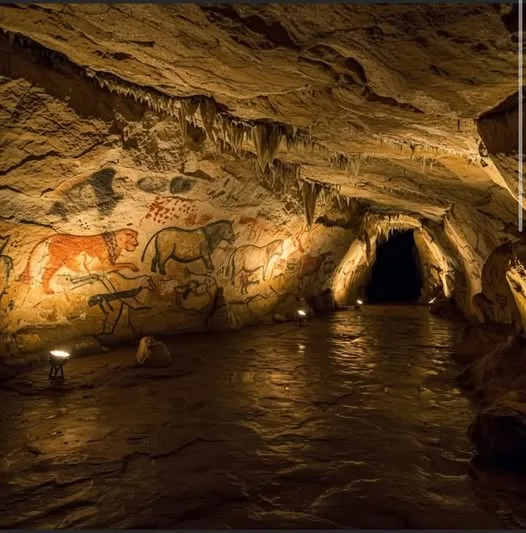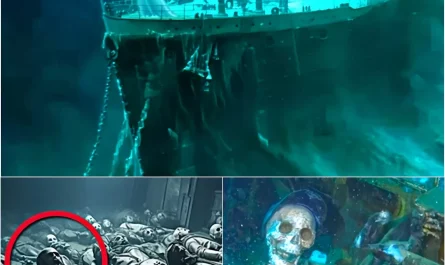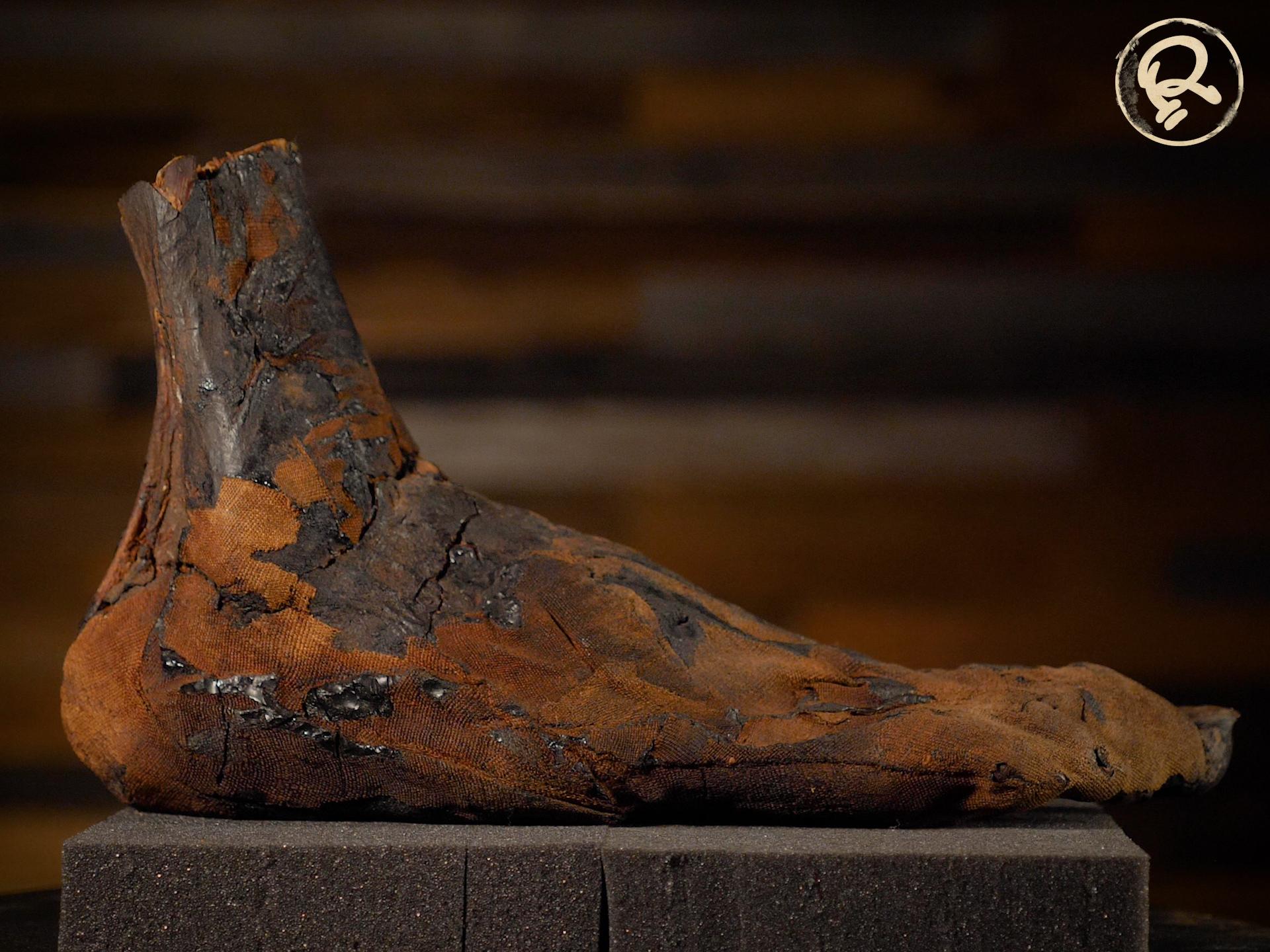The Chauvet Cave: A Prehistoric Masterpiece Sealed by Time
Deep in the Ardèche Valley of southern France, the Chauvet Cave stands as a breathtaking testament to humanity’s earliest artistic genius. Sealed by a landslide around 19,000 BCE, this subterranean gallery remained untouched for over 21,000 years until its rediscovery in 1994. Its walls, adorned with vivid paintings of lions, rhinos, and galloping horses, offer a mesmerizing glimpse into the Ice Age, revealing a level of creativity and sophistication that challenges our understanding of Paleolithic life. This article explores the cave’s discovery, its extraordinary art, and its enduring significance as of 2025.

Discovery: A Hidden Time Capsule
On December 18, 1994, three speleologists—Jean-Marie Chauvet, Éliette Brunel, and Christian Hillaire—stumbled upon the cave while exploring cliffs near the Ardèche River. Squeezing through a narrow tunnel, they entered what has been described as a “cathedral of prehistoric art.” A landslide, dated to approximately 19,000 BCE, had sealed the entrance, preserving the cave’s contents in near-pristine condition. The discovery shocked the archaeological world, as radiocarbon dating revealed the paintings to be 30,000–36,000 years old—twice the age of the renowned Lascaux Cave—placing them among the oldest known artworks in human history, created when Neanderthals still roamed Europe.
The Art of Chauvet: A Paleolithic Masterpiece
The Chauvet Cave contains over 400 depictions of animals, rendered with astonishing skill using charcoal, ochre, and hematite. The artwork, spread across multiple chambers, showcases 14 species, including cave lions, woolly rhinos, mammoths, horses, and bears—many in dynamic poses that suggest movement. Key features of the cave’s art include:
- Dynamic Composition: The artists used the cave’s natural contours to enhance their work, such as a bison’s head painted to emerge from a rock bulge, creating a proto-3D effect. A 10-meter-long panel of horses in the “Horses Panel” flows like a prehistoric filmstrip, with overlapping figures suggesting motion.
- Proto-Cinematic Techniques: Evidence suggests artists exploited flickering torchlight to animate their paintings, making animals appear to move—an early precursor to cinema, 30,000 years ahead of its time.
- Preparation and Skill: The walls were often scraped clean before painting, ensuring a smooth canvas. The use of perspective, shading, and anatomical accuracy reflects a deep understanding of both art and the animals depicted.
- Human Traces: Footprints of an 8-year-old child, possibly an apprentice, are preserved in the clay floor alongside those of an adult, hinting at a collaborative or teaching environment. Bear tracks and bones also suggest the cave was a shared space between humans and wildlife.
The paintings are not merely decorative; they likely held spiritual or ritual significance, possibly linked to hunting or shamanistic practices, though their exact purpose remains a subject of debate.
Scientific and Cultural Significance
The Chauvet Cave’s discovery revolutionized our understanding of Paleolithic art. Its age, confirmed by radiocarbon dating to the Aurignacian period (circa 36,000–30,000 years ago), places it at the dawn of modern human creativity in Europe. The sophistication of the artwork challenges assumptions about early humans, revealing a mastery of technique that rivals later artistic traditions. The presence of Neanderthals during this period raises intriguing questions about potential cultural exchanges, though the paintings are attributed to Homo sapiens.
The cave’s pristine condition, owing to the landslide, provides a rare snapshot of Ice Age life. Alongside the paintings, archaeologists have found tools, hearths, and animal remains, offering clues about the environment and culture of the artists. The child’s footprints, in particular, humanize the site, suggesting a community where art was a shared endeavor.
Preservation and Access
Recognizing the fragility of the cave, French authorities sealed it to the public shortly after its discovery to prevent damage from human presence, as seen at Lascaux, where visitor traffic caused mold growth. In 2015, a replica, the Chauvet 2 Cave, opened nearby, meticulously recreating the original’s art and atmosphere using 3D scans and high-tech materials. This replica allows visitors to experience the cave’s majesty without risking its preservation.
As of 2025, the original Chauvet Cave is accessible only to researchers and select experts, with strict protocols to maintain its microclimate. UNESCO designated the cave a World Heritage site in 2014, recognizing its universal cultural value. Ongoing studies use non-invasive techniques like laser scanning to analyze the art without disturbing the site.
Challenges and Modern Relevance
Preserving Chauvet remains a priority, but climate change and regional instability pose risks to archaeological sites across Europe. Rising humidity levels could threaten the cave’s delicate environment, while funding for conservation efforts is often limited. The Chauvet 2 replica has been a success, drawing thousands of visitors annually and fueling interest in Paleolithic art through exhibitions and virtual tours.
The cave’s influence extends beyond archaeology, inspiring artists, filmmakers, and scholars. Werner Herzog’s 2010 documentary, Cave of Forgotten Dreams, brought Chauvet to global audiences, emphasizing its “whisper of Paleolithic genius.” Social media posts on X reflect ongoing fascination, with users marveling at the artists’ ability to create “proto-cinema” and comparing the paintings to modern animation techniques.
Conclusion
The Chauvet Cave is more than a collection of ancient paintings; it is a time capsule that connects us to our earliest creative ancestors. Its vivid depictions of stampeding rhinos, dueling lions, and galloping horses, animated by torchlight and shaped by the cave’s contours, reveal a profound artistic sensibility born in the Ice Age. Sealed for 21,000 years and rediscovered by chance, Chauvet continues to resonate as a testament to human ingenuity and the timeless urge to create. As we safeguard this treasure for future generations, the cave’s walls still pulse with the spirit of those first artists, whispering across millennia.





